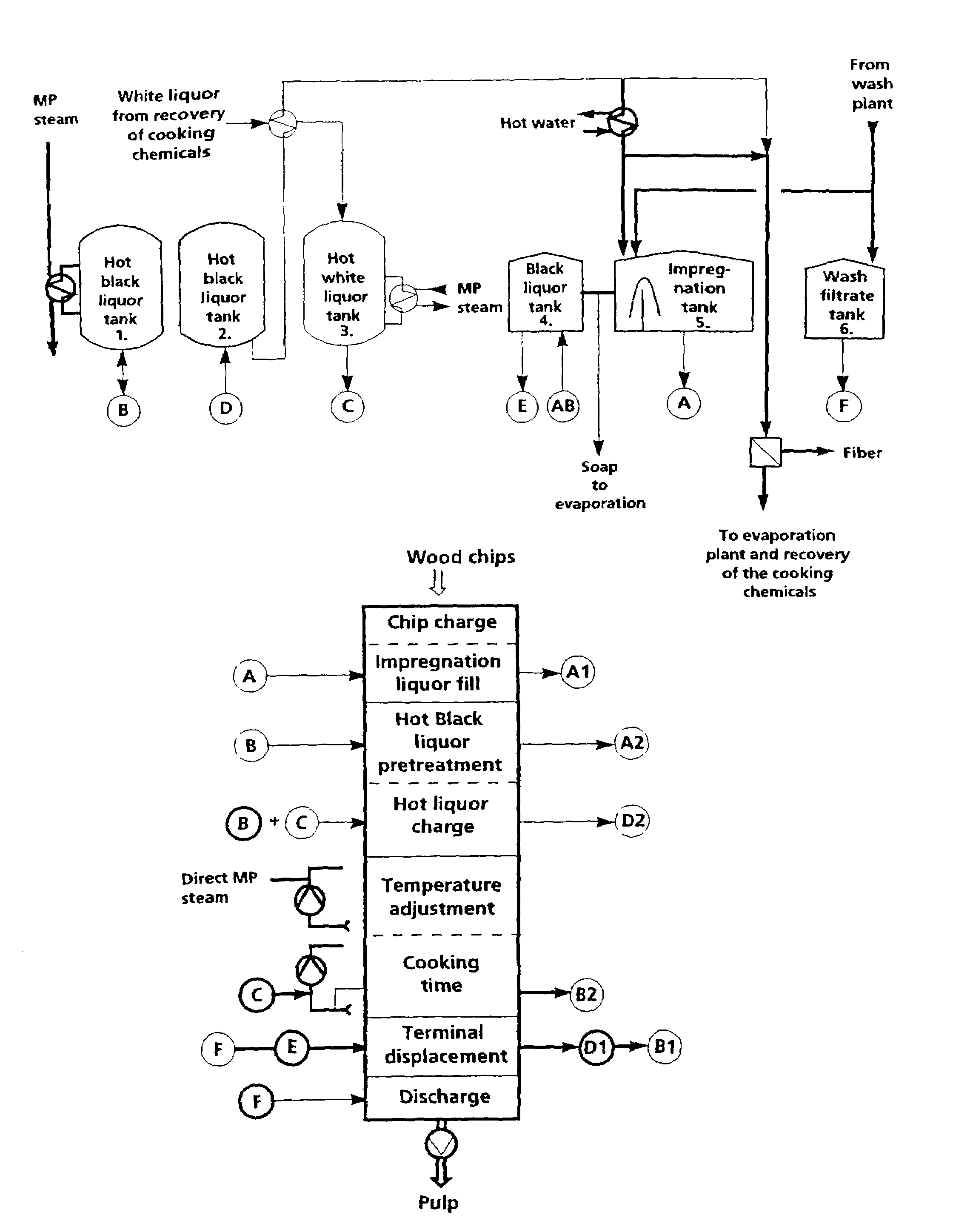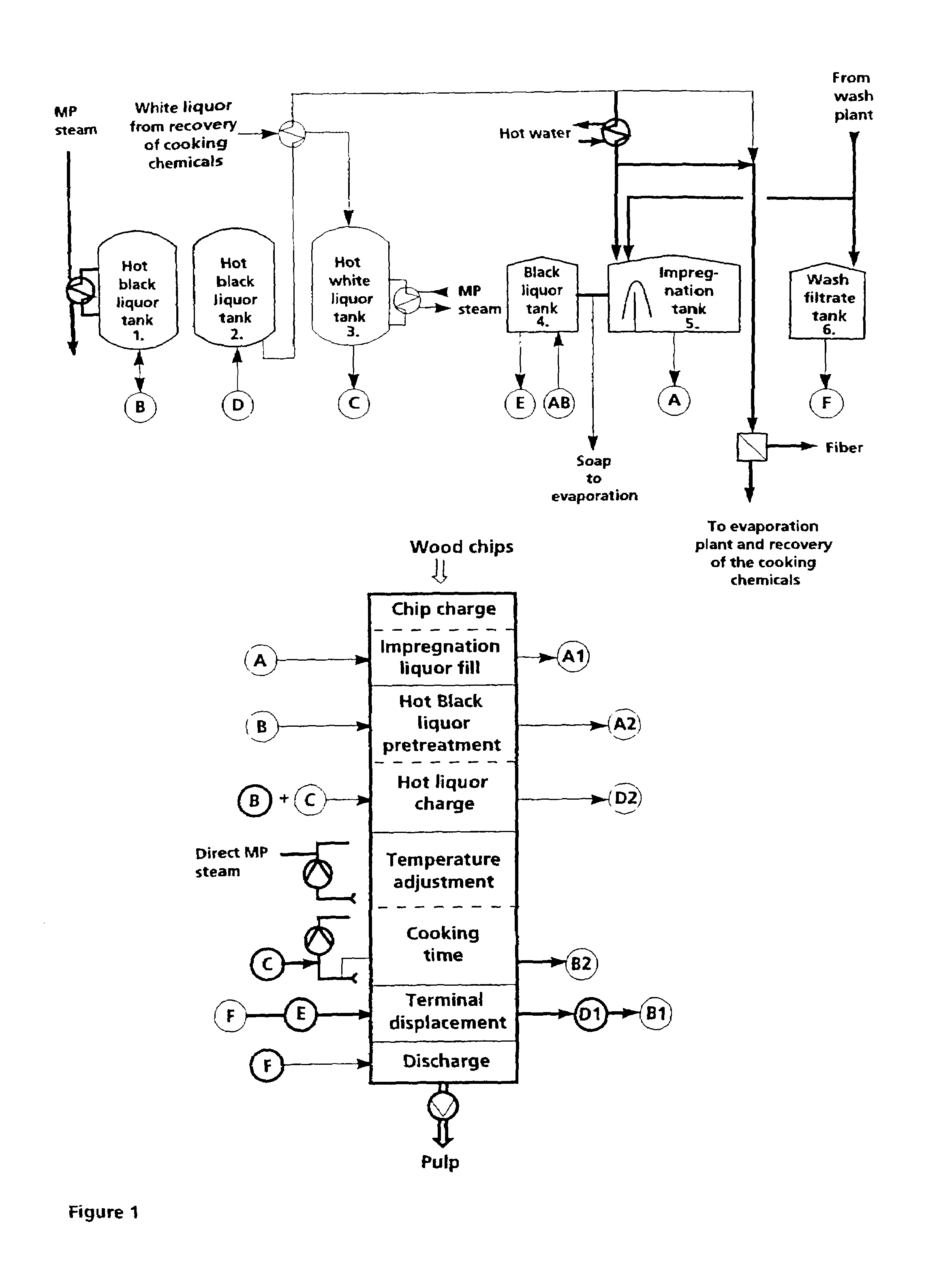Batch process for producing chemical pulp by removing and reintroducing calcium-containing spent liquor in the digester
a batch process and digester technology, applied in the field of batch process for kraft pulp production, can solve the problems of reducing heat transfer, limiting production, and complicating the evaporation of black liquor, and achieve the effect of increasing investment costs
- Summary
- Abstract
- Description
- Claims
- Application Information
AI Technical Summary
Benefits of technology
Problems solved by technology
Method used
Image
Examples
Embodiment Construction
[0039]FIG. 1 shows a block diagram of a liquor-displacement kraft batch process according to the present invention. The FIGURE defines the required tanks, streams and the cooking sequence. Charging the digester with wood chips and evacuating the digester starts the kraft cook. The chips can be packed with steam or be pre-steamed, before the digester is filled essentially with impregnation liquor A from the impregnation liquor tank 5, soaking and heating the chips. Wood chip charging and impregnation liquor charging preferably overlap. An overflow, A1, to black liquor tank, point AB, is carried out in order to remove air and diluted first front of liquor. Preferably, the volume of A1 is kept low. After closing the flow, the digester is pressurized and impregnation is completed. During impregnation, a relatively low temperature is preferred, since a higher impregnation temperature will consume residual alkali too fast, resulting in higher rejects and non-uniform cooking. Preferably, t...
PUM
| Property | Measurement | Unit |
|---|---|---|
| Time | aaaaa | aaaaa |
| Temperature | aaaaa | aaaaa |
| Content | aaaaa | aaaaa |
Abstract
Description
Claims
Application Information
 Login to View More
Login to View More - R&D
- Intellectual Property
- Life Sciences
- Materials
- Tech Scout
- Unparalleled Data Quality
- Higher Quality Content
- 60% Fewer Hallucinations
Browse by: Latest US Patents, China's latest patents, Technical Efficacy Thesaurus, Application Domain, Technology Topic, Popular Technical Reports.
© 2025 PatSnap. All rights reserved.Legal|Privacy policy|Modern Slavery Act Transparency Statement|Sitemap|About US| Contact US: help@patsnap.com


